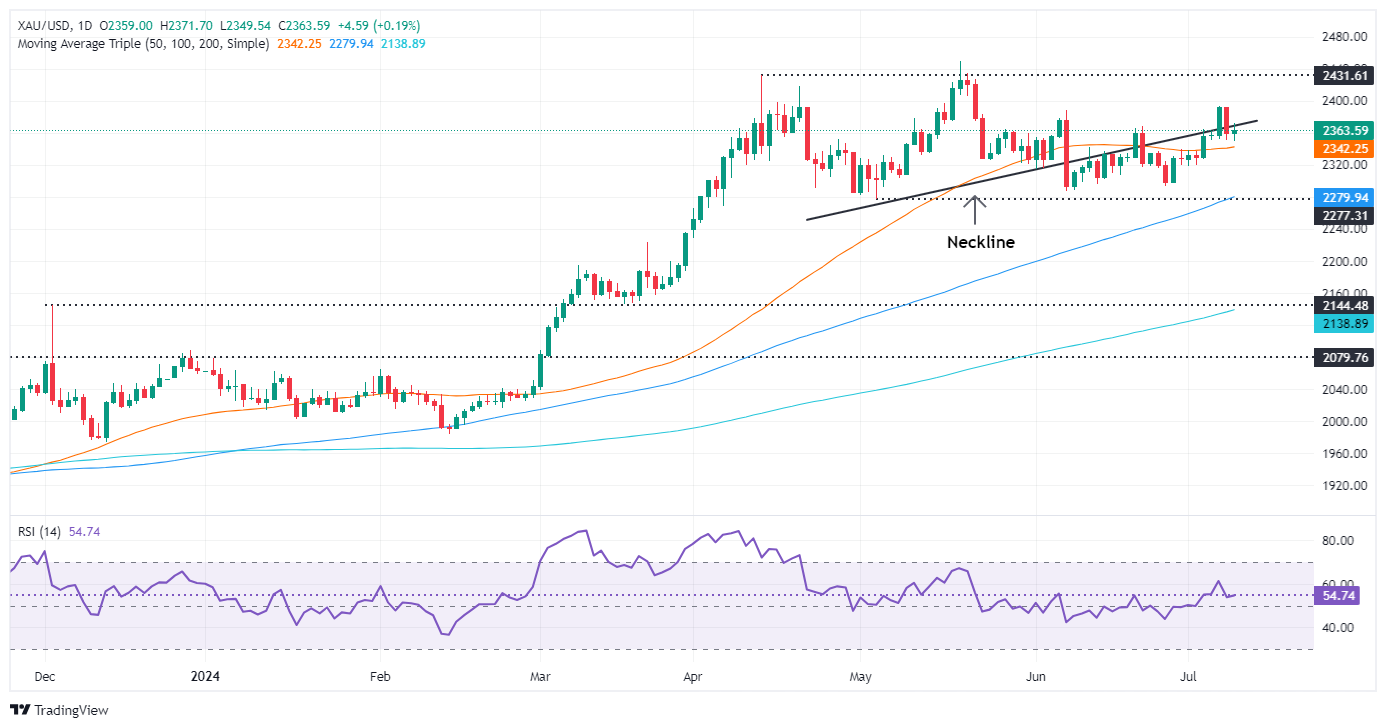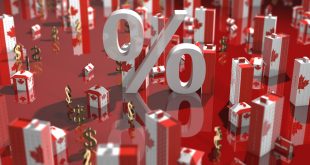Following Powell’s Senate testimony, which suggests a cautious approach to rate cuts, gold prices jump beyond $2,360. Although DXY gains 0.14%, the rate on the US 10-year Treasury increases to 4.296%.
During Tuesday’s North American session, gold prices marginally increased following remarks made by Federal Reserve Chair Jerome Powell before the US Senate Banking Committee. Powell said that although inflation is approaching the Fed’s 2% target, the committee is not yet prepared to reduce borrowing costs. At $2,364, the XAU/USD trades up more than 0.25%.
The precious metal recovered slightly amid elevated US Treasury bond yields and a firm US Dollar. The US 10-year benchmark note coupon climbs one-and-a-half basis points (bps) to 4.296%, while the US Dollar Index (DXY) trends steadily above the 105.00 mark, gaining 0.14%.
Fed Chair Powell stated that “elevated inflation is not the only risk we face,” warning that lowering interest rates too little or too soon could put the economy at risk. He added that while it’s possible to hike rates if the data supports it, the most likely direction would be to “begin to loosen policy at the right moment.”
In addition, the World Gold Council (WGC) said that June saw a second month of inflows into gold exchange-traded funds (ETFs). According to the WGC, overall fund holdings increased to 3,106 tonnes, an increase of almost 18 tonnes.
This is in contrast to the People’s Bank of China’s (PBoC) June decision to forgo purchasing gold, which it made in May. As of the end of June, China possessed 72.80 million troy ounces of the precious metal.
The US economic docket during the week will feature Powell’s speech at the US House of Representatives on Wednesday, followed by the release of inflation figures on the consumer and producer sides. Initial Jobless Claims and the University of Michigan Consumer Sentiment will complement the schedule.
US CPI is expected to decrease from 3.3% to 3.1% YoY in June, while core inflation is projected to remain steady at 3.4% YoY. According to the consensus, Initial Jobless Claims for the week ending July 6 are expected to increase from 238K to 240K. July Consumer Sentiment is set to improve to 68.5, up from 68.2 in June, according to the consensus.
Federal Open Market Committee (FOMC) June Meeting Minutes revealed that most participants believe the current policy is restrictive but are open to further rate increases. Policymakers acknowledged that the economy is cooling and could respond to unexpected economic weaknesses.
According to data from the CME FedWatch Tool, investors are pricing in 70% odds of a Fed rate cut in September, up from 73% on Monday. December 2024 fed funds rate futures contract implies that the Fed will ease policy by 39 basis points (bps) toward the end of the year.

Technical Outlook:
Gold price formed a bearish Harami candlestick pattern after breaching the Head-and-Shoulders neckline, which pushed XAU/USD toward the $2,400 figure before tumbling to the current price level.
Buyers are still in charge with the Relative Strength Index (RSI) standing in bullish territory above the 50-neutral line. Therefore, Gold’s first resistance would be the July 5 high at $2,392, followed by the $2,400 figure. Further upside is seen, with the next resistance lying at the year-to-date high of $2,450, ahead of the $2,500 mark.
Conversely, if XAU/USD slumps below $2,350, the golden metal might decline to the $2,300 level. If this support fails, the next demand zone would be the May 3 low of $2,277, followed by the March 21 high of $2,222.
 Noor Trends News, Technical Analysis, Educational Tools and Recommendations
Noor Trends News, Technical Analysis, Educational Tools and Recommendations





